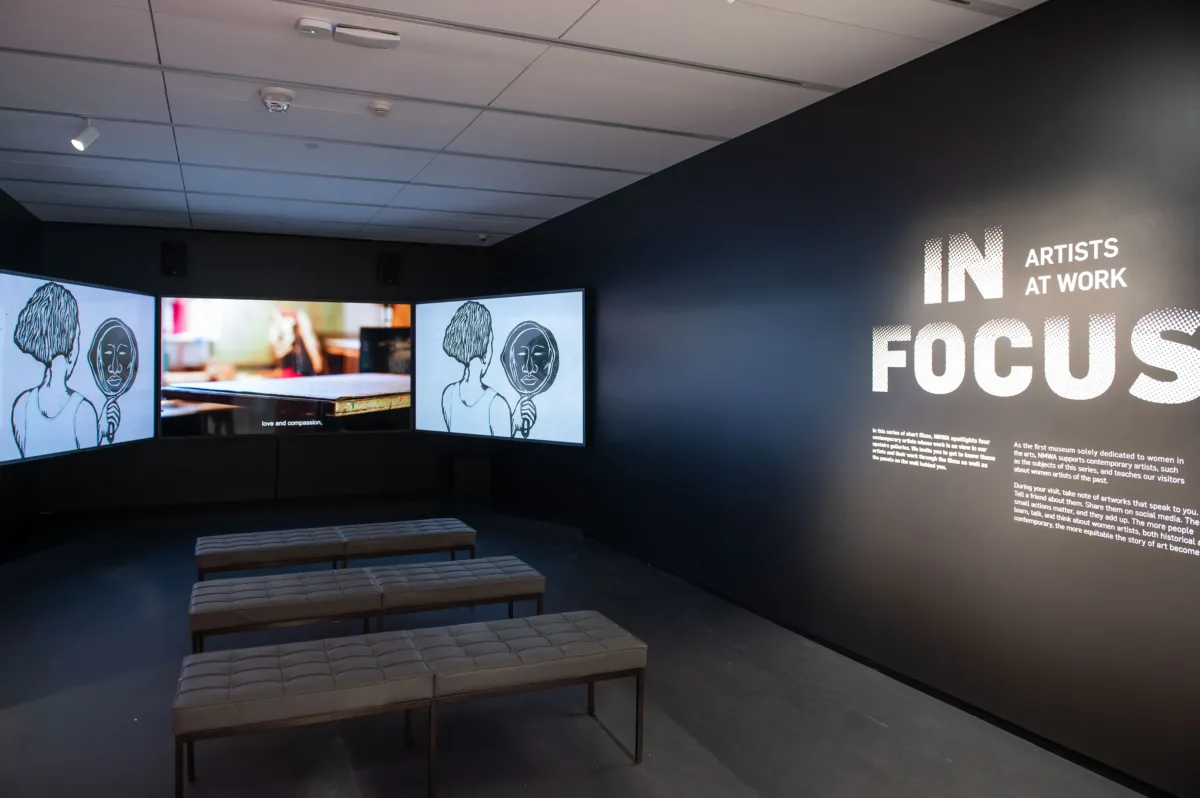Artists at Work Video Series: Sonya Clark
Transcript
( gentle music )
[Sonya] Textiles are a really powerful way of speaking.
( film whirring )
They speak of us and to us.
There’s this relationship between text and textile in the etymology of those two words, text coming from the word meaning to weave.
( film clicks )
( gentle music )
( Sonya laughs )
( clapperboard claps )
My name is Sonya Clark. I’m an artist and an educator.
( gentle music )
I consider hair a text in and of itself.
( gentle music )
It is the primordial fiber, and in it is all of the ancestors who have come before us.
It is literally an archive of us in a fiber.
( gentle music )
Like the richest text you could possibly imagine. And therefore, a very, very powerful material.
In the combined archive that makes a strand of hair is the collectiveness of humanity.
( gentle music )
So when I make artwork that has to do with a celebration of the embodied knowledge that manifests through the hands of hair stylists, that is an expression of culture, joy, care, sisterhood, and is also a political act. A deeply profound cultural act that is getting centered in that work and not put to the margins.
( bright music )
Being an artist, there’s so much freedom, and you have to claim the freedom otherwise people will box you in.
( bright music )
A lot of people form what they think art is by what they experience in museums.
So when museums use their power to say, “This is art; this is who artists can be, how artists do look, this plethora of people,” that will change cultural perceptions around a very narrow way that art has been defined.
( gentle music )
The museum staff at the National Museum of Women in the Arts, they helped me see my work in ways that I had not seen my work.
( gentle music )
Even as I’ve completed the artwork, I’m still in dialogue with it because now the audience is in dialogue with it. So it continues to have meaning beyond that.
So it’s not just talking to me anymore, now it’s talking to someone else, a critic, a museum guard, a child, anyone who is using that artwork as an interface to understand something, and then it helps me as an artist understand potentially what is next.
( gentle music )
In Focus: Artists at Work


